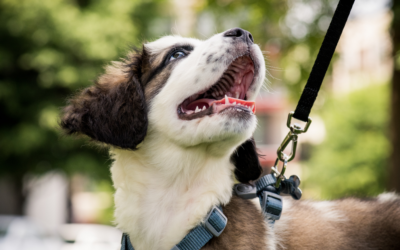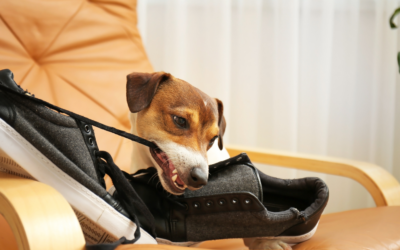Dogs are beloved family members, and introducing them to new family members can be exciting but challenging. Whether bringing home a new baby, adopting another pet, or welcoming a new partner, ensuring a smooth and harmonious transition for your furry friend is essential. In this article, we will explore the steps you must take to introduce your dog to new family members successfully.
Preparing Your Dog for a New Human or Pet
Before the introduction, preparing your pup for the new addition to the family is crucial. Start by establishing a routine that includes exercise, mental stimulation, and quality time spent with your dog. This helps reduce any anxiety or fear and creates a sense of stability. Many dogs do well with routine, and you set them up for success by providing them with a consistent schedule.
In addition to a routine, reinforcing basic commands and manners is essential. This ensures that your dog can behave appropriately during the introduction. Practice cues such as sit, stay, and leave, and reward them with treats or praise when they respond.
By reinforcing these cues, you are setting expectations for your dog's behavior and building their confidence.
Dogs rely heavily on their sense of smell, so allowing them to become familiar with the scent of the new family member before the physical introduction can sometimes help prepare them and get them.
You can achieve this by providing your dog with a blanket or clothing with the newcomer's scent. Allowing them to sniff and investigate this item while providing treats can help them associate the smell with positive feelings.
Gradual Introduction Through Scent
A gradual scent exchange is a great way to start the introduction process. Rub a towel or cloth on your dog, capturing their scent, and then introduce this item to the new family member. Similarly, do the same with the new family member's scent and teach it to your dog. This gradual scent exchange helps them get accustomed to each other's presence and creates a sense of familiarity.
Remember, each dog is unique, and their reaction to a new human or pet may vary. Some dogs may be more accepting and eager to make new friends, while others may be more cautious and take longer to adjust. Patience is key during this process, and respecting your dog's boundaries and comfort level is essential.
Setting Up a Safe Space
Creating a safe space for your dog is essential during the introduction process. This space should be a designated area where your dog can retreat when they need to be alone or want to feel safe. Provide comfortable bedding, toys, and water in this area. It's essential to ensure the safe space is away from potential conflicts or stressful situations, ensuring your dog feels secure and can relax.
Additionally, you could consider using pheromone diffusers or calming sprays in a safe space to create a soothing environment for your dog. These products mimic natural pheromones that help dogs feel calm and secure. By incorporating them into the safe space, you are providing an extra layer of comfort for your furry friend.
Introducing a new human or pet to your dog is a gradual process that requires time, patience, and careful planning. Following these preparation steps and taking the necessary precautions sets the stage for a successful and harmonious introduction.
Step-by-Step Guide to a Safe and Positive Introduction
When it's finally time for the physical introduction, following a step-by-step plan can significantly increase the chances of success. Start by having the new family member enter the house calmly without any excitement or loud noises. This creates a peaceful environment that helps your dog feel at ease.
For many dogs, doing this initial step outdoors can be really helpful as it is not as confined as an indoor space. Going for a walk with the person walking along in the same direction but a distance away, or having someone walk a new dog in the same manner, can provide a great first step.
Next, allow your dog to approach the new family member at their own pace. Do not force any interactions or insist on immediate contact. Instead, let your dog explore and investigate the newcomer on their terms. Remember, every dog has a different temperament and comfort level, so respecting their boundaries and allowing them to adjust at their own pace is important.
During the initial interactions, remaining calm and providing positive reinforcement is crucial. Reward your dog for calm behavior and positive interactions with treats, praise, and affection. This positive reinforcement helps create positive associations with the new family member and reinforces good behavior.
If your dog starts showing signs of stress or discomfort, such as growling, barking excessively, or attempting to retreat, it's essential to remove them from the situation and give them space. Pushing your dog beyond their comfort zone can worsen their anxiety and lead to escalating aggression. Step back and allow your dog to relax before trying again later.

Gradual Increase in Interaction
As your dog becomes more comfortable with the new family member, gradually increase the time and level of interaction. However, it is essential to remain vigilant and closely monitor the dog's behavior and the newcomer's reactions. This gradual exposure helps build trust and familiarity, ensuring a long-term positive relationship between your dog and the new family member.
Seek Professional Help if Needed
If you encounter significant difficulties during the introductions or notice signs of ongoing aggression or fear, it's crucial to seek professional help from a certified dog behaviorist or trainer. They can assess the situation, provide expert guidance, and develop a tailored plan to address behavioral issues.
Every dog is unique, and the introduction process may vary depending on age, breed, and past experiences. Some dogs may require more time and patience to adjust to a new family member, while others may be more outgoing and adaptable. It's essential to be flexible and adapt your approach to meet your dog's needs.
Monitoring and Managing Your Dog's Behavior with Newcomers
Even after the initial introduction, continued monitoring and management of your dog's behavior are necessary. Keeping an eye on your dog's body language, reactions, and interactions with the new family member is crucial in identifying potential issues early on.
Encouraging positive behavior by rewarding your dog for calmness, playfulness, and friendly interactions is important. However, it's equally important to establish consistent boundaries and rules. This helps prevent potential conflicts and ensures everyone, including your dog, feels safe and comfortable in their new family dynamic.
If your dog shows any signs of aggression or discomfort towards the new family member, such as growling, snapping, or lunging, it's imperative to address the issue promptly. Consult a professional trainer or behaviorist to develop effective strategies to manage and modify your dog's behavior positively.
Additionally, creating a safe space for your dog to retreat when feeling overwhelmed or anxious can be beneficial. This could be a cozy corner with their bed and favorite toys, providing them a sense of security and a place to relax away from potential stressors.
Furthermore, it's essential to maintain a consistent routine and provide plenty of mental and physical stimulation for your dog. Regular exercise, playtime, and training sessions can help alleviate excess energy or anxiety, making the introduction smoother and more positive.
Establishing a Peaceful Multi-Pet Household
In some cases, introducing a new pet to your dog may involve additional considerations if you already have other animals in the household. Proper introductions between pets prevent conflicts and ensure harmony within the multi-pet household.
Start by introducing the new pet and your dog outdoors where there is more space. This could be a local park or a friend's backyard. Allow them to sniff and observe each other from a distance, taking in the scents and body language. This initial observation period is essential for them to establish a sense of familiarity. Parallel walks, where dogs are walked in the same direction but a distance apart, can be really helpful at this stage.
Gradually decrease the physical distance between them while maintaining control of the situation. This can be done by using leashes or barriers to ensure safety. As they become more comfortable, you can remove the obstacles and allow them to interact more freely. However, it is important to supervise all interactions between the pets, particularly during the early stages of the introduction. This allows you to intervene quickly if any signs of aggression or discomfort arise.
Providing each pet with space and resources is essential to avoid competition and potential tensions. Ensure each pet has a bed, food, water bowls, toys, and litter boxes (if applicable). This way, they can retreat to their areas when they need some alone time or a break from the others.
- Supervise all interactions between the pets, particularly during the early stages of the introduction. This allows you to intervene quickly if any signs of aggression or discomfort arise.
- Provide structured play and positive experiences for both pets. Engaging in activities, such as walks or training sessions, helps them associate positive emotions with each other's presence.
- Always reward calm and friendly behavior between the pets with treats and praise. This reinforces positive interactions and encourages a peaceful coexistence.
Remember, every pet is unique, and the time it takes for them to adjust to a new addition can vary. Some pets may become fast friends, while others may need more time to warm up. Patience is critical during this process.
If you encounter significant difficulties integrating multiple pets, do not hesitate to seek guidance from a professional behaviorist or trainer. They can assess the situation, provide guidance, and develop a tailored plan to achieve harmony among the pets in your household. Doing this early on is important, as the more your pets practice unwanted behaviour, the more it becomes a habit and their baseline way of interacting with one another.
Introducing your dog to new family members requires patience, understanding, and careful planning. Following the steps outlined in this article, you can ensure a smooth and positive transition for your beloved pet and the newcomers.
Every dog is unique, and the introduction process may take time. With consistent effort and positive reinforcement, your dog can form lasting bonds with their new family members, creating a harmonious home for everyone involved.
So, take the time to introduce your pets properly and create a peaceful multi-pet household. The rewards of seeing your pets coexist happily and forming bonds with each other are immeasurable. With a bit of patience and effort, you can create a loving and harmonious environment for all your furry family members.



